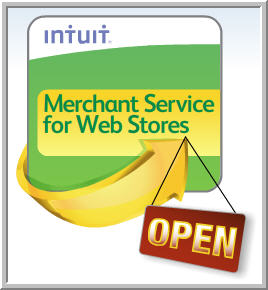
Intuit Merchant Services, and credit cards on Web Stores can boost your accounts receivable by enabling more purchases. Here are some card-processing basics.
Have you ever walked away from a purchase because the merchant didn’t accept credit cards on Web Stores?
So, you probably, have your potential customers. And you may be losing sales because of it.

Intuit offers numerous ways to accept credit cards on Web Stores. One of them is Intuit Merchant Services for Web Stores, which provides an easy transaction gateway to QuickBooks (or it can be used alone). We can help you build an online storefront or connect to an existing one, as well as get you set up with the required financial services.
Learning the Lingo
Regardless of how you accept credit cards, you’ll need to understand a few basic concepts about card processing. Here’s a brief rundown of the most common ones:
Merchant Service Provider: Sets up your online connections and serves as the intermediary between you as the merchant and all of the financial institutions involved
Merchant Bank: Supplies the actual merchant account and manages acceptance and payment of transactions
Issuing Bank: The financial institution that issues a line of credit to your customers
Interchange Fees: Charges assessed by major card associations like Visa and MasterCard that cover the transmission of money; usually a percentage of the total transaction plus a flat fee (American Express and Discover have their fees)

Rates: Fees assessed to the merchant for the moving of funds
Authorization Fee: Charged to the merchant for address verification when the customer and card are not physically present
Downgrade: Occurs when, for example, there is corrupted swiped data or a transaction isn’t settled within two days of authorization
Chargeback: The process set in motion when a customer disputes a transaction; the merchant gets a retrieval request and possibly additional charges from the issuing bank.
There are many best practices for processing credit cards on Web Stores transactions, but the most important one is that you carefully read your merchant agreement. We can answer any questions you might have about merchant accounts and website-based payments. It’s time to start recovering those sales you’re losing.
